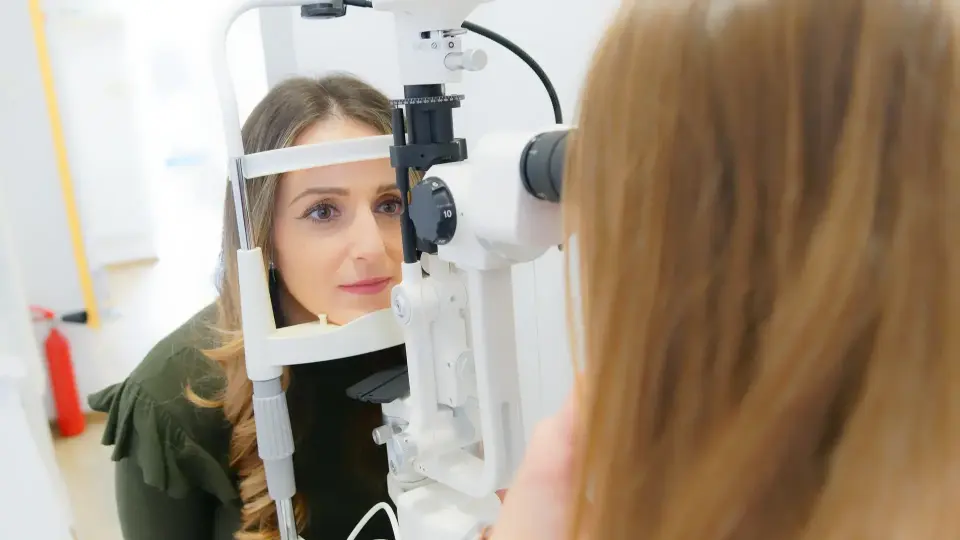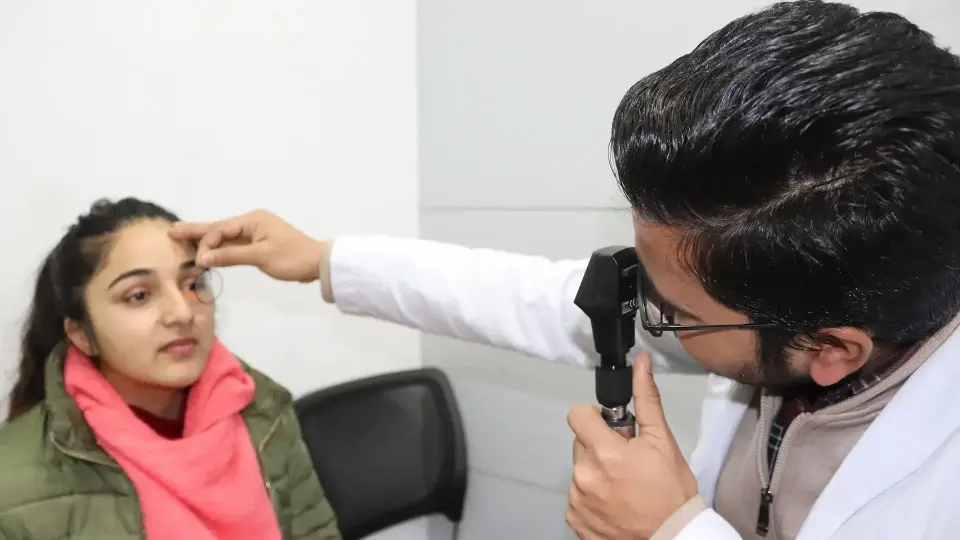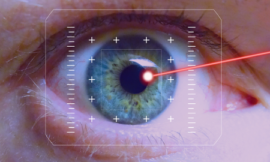Summary:
Laser-assisted in Situ Keratomileusis (LASIK) optical surgery involves the use of excimers lasers, following the corneal flap creation in 10-20 minutes in each eye, to fix the refractive errors that cause the farsightedness symptoms. The ophthalmologist will review the patient’s medical report (40+ years old suffers more) to confirm the eligibility of LASIK for farsightedness.
Farsightedness is an eye condition that prevents a person from seeing closer objects without eyewear, glasses, or contact lenses. Patients may have to visit the optical center to get an eye doctor’s consultation for treatment on time so it may not worsen their eyesight.
On This Page
- Summary:
- What Is Farsightedness or Hyperopia Condition?
- Difference Between Hyperopia and Presbyopia Eye Condition
- Addressing Visual Needs with Readers:
- LASIK For Farsightedness: How Does It Work?
- Who Would Be the Candidate of LASIK for Farsightedness?
- Does LASIK Work Well for Farsightedness?
- LASIK Surgery Cost for Hyperopia
- Finance Your LASIK Procedure with Different Funding Sources
- Alternative Treatment Options for Farsightedness
- Risks Need to Be Discussed by Eyecare Professionals
- Conclusion
- Frequently Asked Questions – LASIK for Farsightedness
What Is Farsightedness or Hyperopia Condition?
Farsightedness, a short eyeball, or a flat corneal eye condition can disturb your vision and you may observe difficulty seeing nearby or closer objects. About 10% of the US population is farsighted including kids, young, and older people.
These people’s retinas are not receiving lights on the exact spot to get clear visual perception from their minds. Symptoms would be having trouble with your eyesight and seeing closer objects (at 25cm) with difficulty. These symptoms can appear at an earlier age too, but these children’s cornea can grow fit at a later age and can’t cause farsightedness.
Let’s see the symptoms that cause farsightedness so we can take earlier actions for its treatment which can be the use of glasses, contact lenses, and laser vision correction.
- Itchiness in eyes especially in the upper side.
- Blurry vision when looking at the nearby things.
- Struggling in reading study notes without lens aid.
- When struggling, it makes the process a headache.
- Eye strain due to flat cornea that passes light behind the retina.
These symptoms can get worse with age. The light direction on the focal point will make a blurry image behind the retina during hyperopia. There are two eye conditions hyperopia and presbyopia during which a person will not get clear visual perception.
Difference Between Hyperopia and Presbyopia Eye Condition
Let’s clear up the confusion between hyperopia or farsightedness and presbyopia eye condition.
| Farsightedness occurs due to a flat cornea. | Presbyopia |
| This condition comes with ciliary muscle weakness. | Presbyopia is caused by the stiffness of the natural lens. |
| Men are affected more than women. | The eyeball would be shorter than 2.5cm (about 0.98 in). |
| Farsightedness or hyperopia can affect individuals of any age. | Presbyopia comes after 40 and gets worse with age. |
| Men affected more than women. | Observe more in women than men. |
The presbyopia symptom is somehow like hyperopia. Let’s have a look at a few of them here;
- Red itchy eyes.
- Tired eyes look.
- Blurred vision when seeing something closer.
- Headache that affects the normal routine life.
- Difficulty in reading books without squinting.
- Experiencing uneasiness after focusing on an object for a few minutes.
In a child’s case, the eyeball or cornea curves get in shape after some years and focus the light at the proper focal point. Farsightedness can cause serious vision complications if not treated at a later age. This is because of the weakened ciliary muscle and shorter eyeballs.
Addressing Visual Needs with Readers:

During a consultation, your vision needs will be discussed with the ophthalmologist. Laser vision correction surgery can provide 20/20 vision in a particular period. When you discuss visual perception, the doctor will assess your eyes’ condition and, ideally, recommend the best treatment choice, which may be medicinal or surgical.
The possibilities of undergoing laser vision surgery vary depending on the individual and their eye condition. Visual acuity together with other eye conditions, will determine which refractive optical therapy best meets the patient’s demands.
Your surgeon will prescribe LASIK for farsightedness if you have farsightedness over +4D (D measures the degree of eyesight). Which refractive surgery (LASIK, PRK, SMILE, LASEK, or IOL) would be best suited, depends on the reader’s visual acuity number.
LASIK For Farsightedness: How Does It Work?
Once you have tested positive for LASIK to correct farsightedness or hyperopia, you will be given some instructions for preparing for LASIK vision surgery. You would have to stop wearing eyewear a few days before surgery. As a result, your vision may stabilize and no longer cause problems following the surgery.
On the day of the operation, a team of certified ophthalmologists will explain how the procedure will take place. The patient must cooperate during the surgery to correct the refractive defect.
Local anesthesia is going to be used to numb the eyes during the optical surgery. The process is the same as that of LASIK for nearsightedness. The laser device directs regulated lasers to the cornea, resulting in a corneal flap. The doctor will now have access to the cornea’s inner section to reshape it and correct the refractive defect.
The entire treatment will take 20 minutes for one eye. The United States now has access to the fastest excimer lasers, known as “Alcon wavelength,” which require only 10 minutes to treat both eyes.
Finally, optical drops will be administered to prevent dry eyes and heal the cornea. Patients will need to rest afterward to avoid complications. In 1 week, patients can resume their routine tasks with clear and sharp vision. The majority of patients achieve 20/20 vision, with a few achieving 20/40.

The ophthalmologist has two FDA-approved LASIK techniques to choose from.
- Bladed LASIK
- Bladeless LASIK
Bladed LASIK:
Ophthalmologists use a microkeratome to manually create a cornea flap. It should require more time than bladeless LASIK. This traditional LASIK procedure was performed long ago as an alternative to glasses or contact lenses for clearer vision.
Bladeless LASIK:
As technology advances, bladeless LASIK becomes more popular due to its effectiveness in the optical field. It uses laser rays directed by the instrument onto the cornea and takes 20 minutes per eye. This patient can expect 20/20 vision.
Who Would Be the Candidate of LASIK for Farsightedness?
Patients with farsightedness must meet specific criteria to be eligible for LASIK. Patients can avoid complications; we will discuss this in the risk involved section if they meet the eligibility requirements. Read the article “Does LASIK hurt?” for eligibility requirements. This article will answer other questions about LASIK eye surgery.
Does LASIK Work Well for Farsightedness?
Yes, LASIK has reduced the reliance of eye patients on glasses or contact lenses. The potential positive outcome is that 70-80% of patients achieve 20/40 vision, while 20-30% require glasses when looking at closer objects or reading papers.
The high success rate of LASIK has encouraged people to undergo this laser refractive eye surgery for their eye conditions (astigmatism, myopia, hyperopia). With this surgery, you will get sharp vision and a clear view of your surroundings.
Now you’re probably wondering how much LASIK costs and whether it’s covered by insurance.
LASIK Surgery Cost for Hyperopia
LASIK will cost you about $1500-$2500 for one eye in the US, and the LASIK consultation is offered for free in most cases. LASIK cost doesn’t matter if you have improved vision for your farsighted eyes as it may ease the patient as there will be no use of eyewear.
Finance Your LASIK Procedure with Different Funding Sources
LASIK financing is not accessible to everyone, as patients must pay $3000-$4000 at once. But don’t worry, there are a variety of financing options available in the United States. Get a consultation with your eye doctor, and he will recommend a payment method that should include easy installments or a few percent discount on your surgery.
Here are some tips for saving money on your LASIK procedure.
- FSA
- HSA
- Installment plan
- Avail discount
- Private insurances
Alternative Treatment Options for Farsightedness
Alternative options for LASIK needs come when you don’t meet the LASIK criteria. Multiple surgical and non-surgical treatment options introduced in the optical field to treat farsightedness or hyperopia. Here below, we have enlisted the surgical treatment options.
- If your eyes require different treatments due to varying levels of visual acuity, monovision LASIK may be the best option.
- SMILE involves the formation of a lenticule, a disc-shaped corneal tissue removed with a laser during surgery.
- PRK will also use lasers to remove epithelium tissues, allowing light to focus on the focal point and provide sharp and clear visual perception.
- If your cornea is thin or unhealthy, IOLs may be considered to improve your vision for nearby objects.
The non-surgical options would be
- Glasses
- Contact lens
Risks Need to Be Discussed by Eyecare Professionals

Patients should be informed by their ophthalmologists about the risks associated with LASIK surgery for farsightedness. The upcoming reward of taking the risk for eye surgery can give the patient clear and sharp vision.
The risk factors involved in having LASIK for farsightedness are;
- Blurry vision after the surgery.
- Itching for some time because of the cornea flap.
- Worse vision is rare in some cases.
- Glare or halos at night.
- Corneal infection or inflammation.
These risk factors are not intended to cause panic. It is for educational purposes, so you will be aware of potential side effects that may last for some time. Remember that most LASIK patients have 20/20 vision, and the procedure has a 90.08% success rate.
Conclusion
LASIK eye surgery is an effective and well-proven surgical method for treating farsightedness. You can have sharp and improved vision after 3-4 hours of surgery, but it may take longer if the corneal flap heals slowly. It is preferable to make an informed decision after consulting with your eyecare practitioner.
Your eye doctor will review your medical history and current eye condition and advise you on how to prepare for LASIK surgery for your hyperopia. If you are not a perfect candidate for LASIK, you will be advised to seek an alternative treatment option.
Frequently Asked Questions – LASIK for Farsightedness
1. Is LASIK Worth the Cost?
Yes, LASIK surgery is a worthwhile investment. After 3-4 hours of LASIK surgery, you can achieve improved vision and eliminate the need for glasses or contact lenses annually.
2. Can LASIK reduce the need for reading glasses?
Yes, LASIK can reduce the need for reading glasses. 70-80% of patients achieve 20/20 vision, with the remaining 20-30% occasionally needing reading glasses.
3. After my LASIK surgery, I’m now farsighted. Is this normal?
Farsightedness after LASIK surgery is not normal. Your vision will need to be improved, and the only thing you can expect after surgery is presbyopia (40 years or older), which no one can prevent except to delay as it occurs with age. Remember that as the cornea heals, your vision will gradually improve following LASIK surgery.
4. Can I have LASIK for farsightedness after having LASIK for nearsightedness?
You can get LASIK for farsightedness after having LASIK for nearsightedness. Farsighted symptoms are to be expected when an ophthalmologist treats nearsightedness by correcting refractive error for a closer focal point.
References
- Biščević, A., et al. (2019). Lasik as a solution for high hypermetropia. Medicinski Arhiv (Print), 73(3), 191.
- Farsightedness: What is hyperopia? (2023, November 28). American Academy of Ophthalmology.
- LASIK surgery: Is it right for you? (2023, June 27). Mayo Clinic.




